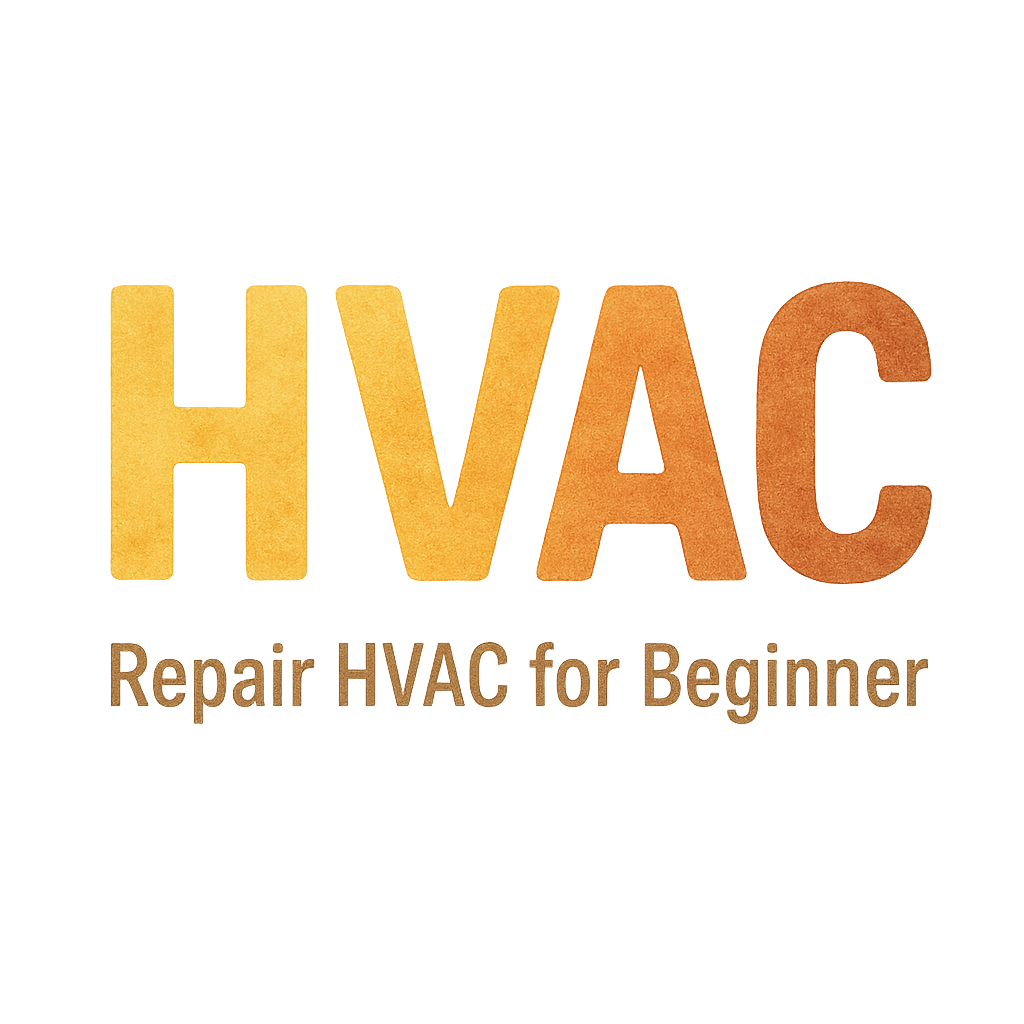Introduction: Understanding Your HVAC Thermostat
When your HVAC system isn’t working properly, one of the first places to check is your thermostat. This small yet critical device acts as the brain of your heating and cooling system, controlling temperatures and helping maintain a comfortable environment. But what happens when it stops working correctly? In this guide, we’ll walk you through 6 HVAC thermostat troubleshooting steps for beginners, so you can handle common issues and get your system back to normal.
Why is HVAC Thermostat Troubleshooting Important?
A malfunctioning thermostat can lead to inefficiency, discomfort, and costly repairs. If you’re experiencing uneven temperatures, your system runs constantly, or it’s not turning on at all, your thermostat might be to blame. Troubleshooting the issue early can save you time, money, and unnecessary repairs.

Benefits of Proper Thermostat Maintenance
Maintaining your thermostat not only ensures comfort but also helps optimize energy use, reducing your energy bills. HVAC maintenance, including proper thermostat care, is key to keeping your system in top condition.
Common Issues with Thermostats
Some of the most common issues with thermostats include incorrect settings, a faulty power source, dirty sensors, or poor wiring connections. These issues can often be resolved with a few simple steps, and you don’t need to be a professional to get the job done. For more on the topic of common issues with HVAC systems, check out our guide on HVAC System Diagnosis.
Step 1: Check the Thermostat Settings
Before diving into more complicated troubleshooting, the first thing you should check is the thermostat settings.
Understanding the Mode Settings (Heat, Cool, Fan)
Ensure your thermostat is set to the correct mode (heat, cool, or fan). It’s easy to forget that your thermostat can be accidentally switched to “fan-only” mode, which will only circulate air but not cool or heat your home. Check your settings to ensure it’s in the proper mode for the current season.
Ensure the Temperature is Set Correctly
Double-check the temperature setting. It’s possible that someone adjusted it and didn’t inform you, or maybe the setting was accidentally changed. Set the thermostat to the temperature you want and see if the system responds.
Step 2: Inspect the Power Source
If the thermostat still doesn’t respond, the next step is to check its power source.
Checking the Circuit Breaker
If your HVAC system isn’t turning on, the power to your thermostat or HVAC unit might have been cut off. Check your circuit breaker to ensure it hasn’t tripped. If it has, flip it back on and see if the system starts working again. This is often one of the simplest fixes.
Testing the Thermostat’s Battery (If Applicable)
Many modern thermostats use batteries, so check to see if they need replacing. If your thermostat is unresponsive, replacing the batteries is an easy and inexpensive first step to fix the issue.
Step 3: Examine the Thermostat’s Wiring
If your thermostat is still not functioning correctly, it’s time to inspect its wiring.
How to Check for Loose or Damaged Wires
Turn off the power to your HVAC system before inspecting the thermostat. Check the wires connected to the thermostat for signs of damage or loosening. If you find any loose wires, tighten them; if wires are damaged, they may need to be replaced by a professional. If you’re unsure about how to handle wiring issues, consider HVAC repair services for professional help.
Understanding the Impact of Poor Wiring Connections
Loose or damaged wiring can cause inconsistent readings, triggering malfunctioning of your HVAC system. This issue might need professional help if you’re not comfortable handling electrical components. For more information on proper wiring, check out our HVAC Tools and Equipment section.
Step 4: Calibrate Your Thermostat
Sometimes, a thermostat may need calibration to ensure it’s reading the temperature correctly.
Why Calibration Matters
Over time, thermostats may become slightly inaccurate. A well-calibrated thermostat ensures the temperature readings match the actual room temperature, preventing unnecessary heating or cooling. If you notice inconsistent room temperatures, calibration may be the answer.
How to Calibrate Your Thermostat
Some digital thermostats have a built-in feature for calibration. You can also use a thermometer to compare the reading of your thermostat to the actual room temperature. If the discrepancy is significant, consult your manual for instructions on calibrating your specific model. If calibration doesn’t work, you might need thermostat repair.
Step 5: Check for Dirt and Debris
A build-up of dirt or debris can prevent your thermostat from working correctly.
Cleaning the Thermostat’s Sensor
Dust and debris can affect the accuracy of your thermostat’s temperature sensor. Use a soft cloth or brush to clean the thermostat’s sensor, removing any dust that might interfere with its performance. Keeping the sensor clean helps prevent common HVAC issues.
Preventing Dirt Build-up for Better Accuracy
In addition to regular cleaning, ensure the area around your thermostat is clear of dust, dirt, and debris to prevent future build-up. Regular maintenance is key to ensuring your thermostat stays accurate and effective. For more maintenance tips, visit our HVAC Maintenance and Cleaning page.
Step 6: Test Your HVAC System
Once you’ve gone through all the steps, it’s time to test the system.
Running a Simple HVAC Test
Set the thermostat to a specific temperature and run your HVAC system in heating or cooling mode. Observe the system’s response to see if it’s functioning correctly. If the system is still not responsive, you may need further troubleshooting or repair.
Evaluating the Results of Your Test
After the test, check if the HVAC system is maintaining the set temperature. If it’s still malfunctioning, there might be a deeper issue requiring professional assistance. For additional guidance on troubleshooting, check out our HVAC Troubleshooting Tips.
When to Call a Professional
If you’ve gone through all these steps and your thermostat still isn’t working, it might be time to call in a professional HVAC technician. There may be more complex issues at play, such as problems with your HVAC system’s internal components or wiring.
Knowing When the Issue is Beyond DIY Troubleshooting
If you’re uncomfortable working with electrical components or your troubleshooting hasn’t fixed the issue, it’s best to reach out to an HVAC professional. They have the experience and tools needed to identify and fix complex problems. If you need professional help, visit our HVAC Repair and Safety page.
Conclusion: Keeping Your HVAC System Running Efficiently
Maintaining and troubleshooting your thermostat is an essential part of keeping your HVAC system running efficiently. By following these 6 HVAC thermostat troubleshooting steps for beginners, you can ensure your system functions optimally and keeps your home comfortable year-round. Regular maintenance and timely repairs can help you avoid bigger issues in the future.
Frequently Asked Questions (FAQs)
What should I do if my thermostat is not responding?
Check the batteries, ensure the circuit breaker is on, and make sure all wires are properly connected.
How often should I check and maintain my thermostat?
It’s a good idea to check and clean your thermostat every 3 to 6 months to ensure it’s working efficiently.
Can a thermostat affect the heating and cooling efficiency?
Yes, an improperly working thermostat can cause your HVAC system to run longer or less efficiently, increasing energy costs.
How do I know if my thermostat needs to be replaced?
If your thermostat is old, unresponsive, or you’ve gone through troubleshooting without success, it may be time for a replacement.
What are common mistakes when troubleshooting thermostats?
Not turning off the power before working on the thermostat or misidentifying wiring issues are common mistakes.
Can I reset my thermostat myself?
Yes, many thermostats have a reset button or a procedure outlined in the user manual to restore factory settings.
What tools do I need to troubleshoot my thermostat?
You’ll need basic tools like a screwdriver, thermometer, soft cloth for cleaning, and possibly a voltage tester if working with wiring.


